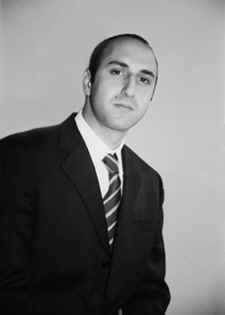|
|
Universal Detection Technology (UDTT.OB) |
|
|
CEOCFO Current
Issue |
Universal
Detection Technology, in collaboration with NASA’s JPL, is in the process of
developing an Anthrax ‘Smoke Detector’, which is a real time biological weapon
detection device Universal Detection Technology (OTC:BB - UDTT) has
specialized in manufacturing airborne particulate and pollutant detection devices for the
past 30 years. With the emergence of the threat of bio-terrorism and the evident lack of
preparedness of the country to such attacks, the Company focused its research and
development efforts in developing a real time biological weapon detection device. The
attacks of September 11, 2001 and the subsequent spread of anthrax spores have created a
new sense of urgency in public health systems across the world, and especially in the
United States. On June 13, 2002 President Bush signed into law legislation allocating $4.3
billion to protect the country against future bio-terrorism. “What
we actually developed over the years was a device capable of sampling the air at a rate
faster than a human breathes, and of capturing particles, which are the specific and very
minute size, which then coincide with the types of things that we are talking about.”
Offers Jacques Tizabi, Chairman & CEO of Universal
Detection Technology, “Therefore, what Universal Detection has
created is the mechanism of that collection for very specific size of particles, because
only then would you be able to have those samples ready for detection. In addition, our
device has always been autonomous, because of this collection mechanism.” Amir
Ettehadieh, director of Research and Development for Universal Detection Technology
tells us, “The advantage that the Universal Detection device
has is basically three fold. First, it is faster than any other device out there. It will
give you positive results within 15 minutes of exposure to the Anthrax bacteria. The
second advantage that it has is that it works on its own; you do not need an attendant or
a technician to be there constantly. If there is a positive detection result, it will give
off an alarm and notify the appropriate individual. The third major advantage is that our
device never gives false positive results, which is a serious drawback to the other
technologies that are out there. For example, the PCR DNA based technology can give a
positive result from pollen or other organic material. In contrast, our device only gives
a positive result in the presence of the Bacterial spores.” Addressing the
investment community Mr. Tizabi says, “It
is very competitive and difficult if you want to develop fully proprietary technology
within a small company and then take it to a government sector. However, when you are in
partnership with NASA’s Jet Propulsion Laboratory, as we are, and you bring that kind
of credibility and science and government backing in partnership with yourself, that is
where you all of a sudden find yourself having a lot of potential for the future.” |
|
To view Releases highlight & left click on the company name!
|
|






